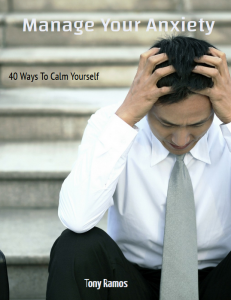
High School students are struggling with mental health issues
Teen suicide
Myles Thompson is a student at Columbus Alternative High School. This piece was written for Columbus Journalists in Training, a program sponsored by the Columbus Dispatch and Society of Professional Journalists Central Ohio Pro-Chapter for Columbus City Schools students. Myles was a member of team Cap City Creative.
Some teachers say they receive insufficient training when it comes to helping students with mental health issues even though the Centers for Disease Control and Prevention says suicide is the second leading cause of death for individuals between the ages 10 to 24.
Students around the globe are having an increase in mental health issues, the most notable being depression and anxiety. For instance, 15% of teens suffered a major depressive episode in the last year, according to Mental Health America.
“You can definitely see the effects in the classroom. It’s almost like they stop caring about school,” a Columbus City Schools teacher said when asked about the effects of mental health on students.
The importance of mental health is often underestimated by many. Poor mental health not only affects the individual, but also the people surrounding them. It can cause a domino effect, and cause other people’s mental health to deteriorate. This only makes mental health that much more important.
“Mental health problems in youth often go hand-in-hand with other health and behavioral risks like increased risk of drug use, experiencing violence, and higher risk sexual behaviors that can lead to HIV, STDs, and unintended pregnancy,” according to the CDC.
More student journalist projects: Training the next generation of Columbus journalists
A Columbus City Schools student interviewed by Columbus Journalists in Training said they made a suicide attempt in the sixth grade, but are doing better now.
They are a real-life example of how mental health can impact the lives of young people.
For example, teen girls are experiencing record high levels of violence, sadness, and suicide risk, according to a February report from the CDC.
Story continues
That said, not everyone understands or experiences mental illness.
Two Columbus City Schools students interviewed said that they have not personally ever dealt with mental health issues.
One in five U.S. adults lived with a mental illness in 2021, according to the National Institutes of Health.
“There have been a few, but I think most students are scared to talk about mental health,” a Columbus City Schools counselor said when asked if students have approached them asking for help.
However, the staff worries if they can help when the time comes. Teachers say they do not get enough training, and they almost have to train themselves. They know the risks but are not given the training to actually deal with the problems, according to a Columbus City Schools teacher.
What is causing decline in mental health?
A common conclusion is that social media is a big factor in the mental health crisis.
The Columbus City Schools teacher and counselor both agree that the biggest change since 20 years ago, when mental health was not as big of an issue, to now where it is a big issue, is social media.
Social media can put a lot of pressure and unnecessary expectations on teens and young adults. Numerous studies have found links between social media and well-being.
A 2022 report from researchers from Massachusetts Institute of Technology, Bocconi University and Tel Aviv University found that “the negative effect of Facebook on mental health appeared to be roughly 20% the magnitude of what is experienced by those who lose their job.”
Negative effects can be caused by social media because it limits direct contact with peers and increases comparison which can cause low self-esteem, anxiety, and depression, according to the Child Mind Institute.
In the past 20 years, there have been many efforts toward helping individuals struggling with mental health. Unfortunately, it still is not enough.
Most students have friends who struggle with mental health even if they do not personally deal with it.
Even though not everyone deals with mental health issues, the amount of people who have mental health issues is not insignificant. An estimated 49.5% of adolescents have had a mental health disorder at some point in their lives, according to the U.S. Department of Health & Human Services.
However, there is hope out there. There are many websites that you can reach out to for help such as, the 988 Suicide and Crisis Lifeline, MentalHealth.gov, and the Suicide Prevention Resource Center.
Both the Columbus City School counselor and teacher want students to know that staff in the schools can be resources as well.
“Don´t be scared to ask for help,” said the counselor.
“Push on even if it is hard. Things will eventually get better,” said the teacher.
Myles Thompson is a student at Columbus Alternative High School. This piece was written for Columbus Journalists in Training, a program sponsored by the Columbus Dispatch and Society of Professional Journalists Central Ohio Pro-Chapter for Columbus City Schools students. Myles was a member of team Cap City Creative.
This article originally appeared on The Columbus Dispatch: Student project: High School students are struggling with depression






